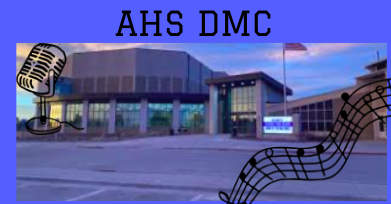Are You Safe On Roller Coasters?
Roller Coasters have become a staple of the amusement park experience since before light bulbs were invented in 1879. The very first coaster was called Promenades Aériennes, or “Aerial Stroll,” and was built in 1817, in Paris. To simplify the ride, it worked like a minecart on a track by letting gravity and manual labor to move the cart around. There were no seatbelts as cars hadn’t been invented yet, much less ones that actually had seatbelts. The cart would zip around a short curved incline and come to a stop on another curve at the bottom. There were no brakes so you’d have to wait for the cart to stop itself. It was also a bit easy to get thrown from the cart if you weren’t careful.
Today, roller coasters have evolved to adapt the use of electricity, and are subject to laws and regulations. They have several sub-categories and technical terms for their features. The two big types of coasters are wood and steel. Some are even hybrids. There are too many elements to mention here, so I’ll only mention one. (A list of others will be linked below.)
This element is technically two but they’re really the same, the “head choppers” and “foot choppers.” Obviously, they don’t actually sever your limbs. All of them are designed so that even the tallest rider with their hands or legs outstretched couldn’t touch them. (Ride operators are trained to spot people who may be too tall of course.) Coasters have a lot of supports, and some cross over or under the main track. At higher speeds, you have less time to register distance between you and them. So it seems as though your head and a support beam are about to have a meeting! This can deter people from rides, but they are always checked vigorously beforehand to make sure this doesn’t happen.
Before we get into specific coasters, let’s explain overall safety. Are you familiar with the clacking sound that can be heard as a train heads up a lift? This is a safety feature implemented in case a train needs to stop or if a pulling system fails. Under the cars, there are little wheels that help them move along. Attached to the wheel by a few small bars is a metal wedge that is held up as the wheel moves in the correct rotation, usually clockwise. Should something go wrong and the train slides down the lift hill, the wheel will turn counter-clockwise. This moves the wedge down to catch a stair-like track to stop the train. These are on every car, so should one anti-rollback wedge fail, there are several others that will still halt the train. The chance that the pulley system and all of the anti-rollbacks fail is astronomically low at less then a percent of a percent. You are more likely to die on the way to the coaster then for all of that to fail. Sure you’ll be stuck up there, but the ride’s safety is functioning as it should. It’s better than falling back down the lift hill and smashing into the previous train.
However, crashes are an ever increasing rarity. Electronic sensors are used to detect whenever a train passes, and whether one has stopped or hasn’t completed a loop. (Or any other element on the track, like corkscrews and helixes.) These things were tricky in their early days, but now they have been specialized to ensure the safest method of operation. If you’ve heard of “The Smiler”, it’d be easy to sway this sense of safety.
“The Smiler” started with four trains on its tracks, but to keep up with demand, one more was added. This fifth train was sent out as a test while the next train was loaded with park guests. The fifth never made it over the batwing element of the ride. Sensors detected this, and stopped the loaded train exactly as it was supposed to. However, the engineer who was watching over “The Smiler” didn’t know about this fifth train, and overrode the emergency stop, thinking it was a simple malfunction. The loaded train crashed into the empty fifth, injuring those on board but no one was killed. People tried blaming “The Smiler,” but it functioned perfectly. It was the lack of communication that caused the accident. So, if you’re ever in England and visit the Alton Towers Theme Park, know that The Smiler is perfectly safe. It’s actually one of the top rated coasters in England.
What about here in America? Let’s start with something closer to home, this one’s in Altoona, Iowa, in a park called Adventureland. This one is called “The Monster,” manufactured by Gerstlauer. This company also made “The Smiler.” At the bottoms of the first hill, riders can reach a top speed of 65 miles per hour. Interestingly, this one also has LED lights that make it shine at night. It’s been in operation since 2016, and no accidents have been reported. Another ride that is more of a family ride in Adventureland is a wooden coaster called “The Underground.” Fitting its name, it’s all enclosed. There are no inversions, so this is a lot tamer than The Monster. It’s an easier ride more focused on scenery. Perfect for a rainy day!
In Colorado, there is the Outlaw Mountain Coaster. This one has riders sitting on a bobsled type of car. They’re strapped in, of course, but for the most part they’re trusting you not to jump off. There are no upside-down moments as riders wouldn’t be properly strapped in. Since riders are minimally strapped in, this is considered a thrill ride. In the Lakeside Amusement Park, there is a new ride opening this year under an unknown name. This unknown coaster has been relocated five times now, it was mostly known as Zyklon. It was made by Pinfari. Like Gerstlauer, they are well respected and highly regarded in the coaster making business. Zamperla is also known for making high quality rides. However, all three of these have had their designs stolen by knock-off companies, with varying levels of safety. As a general rule of thumb, the older rides are usually more safe, as the details have been ironed out.
All in all, are roller coasters safe? Absolutely, you are more likely to be struck by lightning then to die on these rides. Deaths aren’t good for business. There are a lot of legal fees and “The Ride of Steel” and “Rolling Thunder” struggled to get riders back after their related deaths. Both of which were the fault of the humans involved, not the rides. In fact, a lot of the accidents happened when the ride was fully functional. People standing up on rides and wiggling out of their restraints are more common than trains jumping tracks and support beams collapsing. All rides, not just coasters, are maintained daily. Sometimes even hourly, and especially whenever needed. If matinence can’t be carried out on a coaster, it is altered or removed. Riders can be absolutely sure thhey’re in good hands when on roller coasters, so you can focus on having a good time!
Check out other roller coaster elements here:

Hellooo there, Evelyn Irene Robertson writing in, bringing you the truth! The thoroughly edited truth. I am a senior this year despite the claims otherwise....






